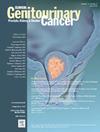接受重症监护治疗的转移性肾细胞癌患者住院姑息治疗的趋势和差异
IF 2.3
3区 医学
Q3 ONCOLOGY
引用次数: 0
摘要
目的:转移性肾细胞癌(mRCC)患者接受重症监护治疗的住院姑息治疗的时间趋势和预测因素尚不清楚。方法:根据2008-2019年全国住院患者样本,我们确定了接受重症监护治疗的mRCC患者,即有创机械通气、经皮内镜胃造口管插入、急性肾衰竭透析、全肠外营养或气管造口术。估计年度百分比变化(EAPC)分析和多变量逻辑回归模型解决了住院姑息治疗的使用。结果:3802例接受重症监护治疗的mRCC患者中,817例(21.5%)接受住院姑息治疗。总体而言,2008年至2019年期间,住院姑息治疗使用率从4.9%增加到31.5% (EAPC +9.2%)。在亚组分析中,住院姑息治疗使用增幅最高的是中西部地区(EAPC +11.9%)、南部地区(EAPC +10.4%)和教学医院(EAPC +9.0%;P均≤0.004)。在logistic回归模型中,教学医院状况(比值比[OR] 1.41)与当代年份间隔(比值比[OR] 2.12;均P < 0.001)独立预测较高的住院姑息治疗率。相反,东北地区(OR 0.53)和南部地区(OR 0.79)的住院率相对较高;所有P≤0.03)与较低的住院姑息治疗率相关。结论:在mRCC患者中,住院姑息治疗率随着时间的推移而改善,中西部和南部医院的增幅最大。此外,在教学医院或在西方入院与较高的住院姑息治疗率有关。因此,地区差异以及教学医院地位的差异代表了mRCC患者接受重症监护治疗时住院姑息治疗全面覆盖的目标。本文章由计算机程序翻译,如有差异,请以英文原文为准。
Trends and Disparities in Inpatient Palliative Care Use in Metastatic Renal Cell Carcinoma Patients Receiving Critical Care Therapy
Purpose
Temporal trends in and predictors of inpatient palliative care use in patients with metastatic renal cell carcinoma (mRCC) undergoing critical care therapy are unknown.
Methods
Relying on the National Inpatient Sample (2008-2019), we identified mRCC patients undergoing critical care therapy, namely invasive mechanical ventilation, percutaneous endoscopic gastrostomy tube insertion, dialysis for acute kidney failure, total parenteral nutrition, or tracheostomy. Estimated annual percentage changes (EAPC) analyses and multivariable logistic regression models addressed inpatient palliative care use.
Results
Of 3802 mRCC patients undergoing critical care therapy, 817 (21.5%) received inpatient palliative care. Overall, inpatient palliative care use increased from 4.9% to 31.5% between 2008 and 2019 (EAPC +9.2%). In subgroup analyses, the highest increase in inpatient palliative care use was observed in the Midwest (EAPC: +11.9%), in the South (EAPC +10.4%), and in teaching hospitals (EAPC +9.0%; all P ≤ .004). In logistic regression models, teaching hospital status (odds ratio [OR] 1.41) and contemporary year interval (OR 2.12; all P < .001) independently predicted higher inpatient palliative care rates. Conversely, hospital admission in the Northeast (OR 0.53) or in the South (OR 0.79; all P ≤ .03) was associated with lower inpatient palliative care rates than in the West.
Conclusion
In mRCC patients, inpatient palliative care rates have improved over time, with the highest increase in hospitals in the Midwest and in the South. Moreover, admission to teaching hospitals or in the West is associated with higher inpatient palliative care rates. In consequence, regional disparities, as well as differences according to teaching hospital status represent targets to achieve comprehensive inpatient palliative care coverage in mRCC patients receiving critical care therapy.
求助全文
通过发布文献求助,成功后即可免费获取论文全文。
去求助
来源期刊

Clinical genitourinary cancer
医学-泌尿学与肾脏学
CiteScore
5.20
自引率
6.20%
发文量
201
审稿时长
54 days
期刊介绍:
Clinical Genitourinary Cancer is a peer-reviewed journal that publishes original articles describing various aspects of clinical and translational research in genitourinary cancers. Clinical Genitourinary Cancer is devoted to articles on detection, diagnosis, prevention, and treatment of genitourinary cancers. The main emphasis is on recent scientific developments in all areas related to genitourinary malignancies. Specific areas of interest include clinical research and mechanistic approaches; drug sensitivity and resistance; gene and antisense therapy; pathology, markers, and prognostic indicators; chemoprevention strategies; multimodality therapy; and integration of various approaches.
 求助内容:
求助内容: 应助结果提醒方式:
应助结果提醒方式:


